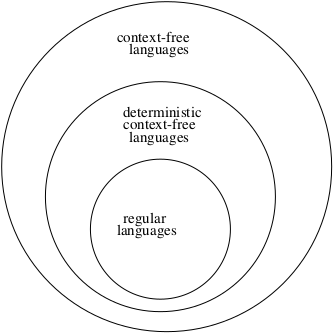6.Deterministic Pushdown Automata§
Definition: A PDA \(M = (Q, \Sigma, \Gamma, \delta, q_0, z, F)\) is deterministic if for every \(q \in Q\), \(a \in \Sigma \cup \{\lambda\}\), \(b \in \Gamma\):
1. \(\delta(q, a, b)\) contains at most one element2. if \(\delta(q, \lambda, b)\) is not empty, then \(\delta(q, c, b)\) must be empty for every \(c \in \Sigma\).
Definition: \(L\) is a deterministic context-free language (DCFL) if and only if there exists a deterministic PDA \(M\) such that \(L = L(M)\).
